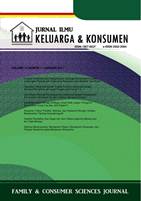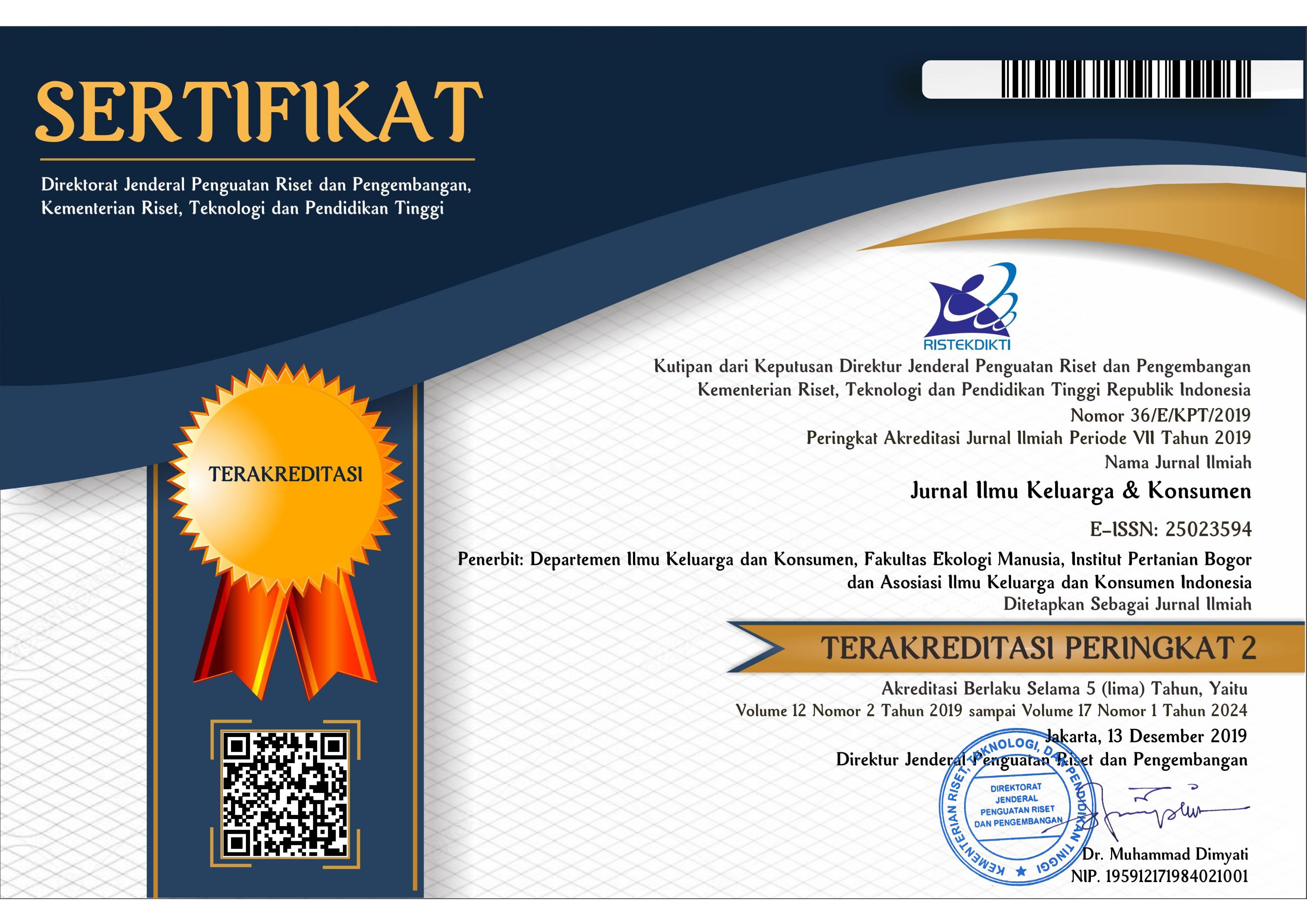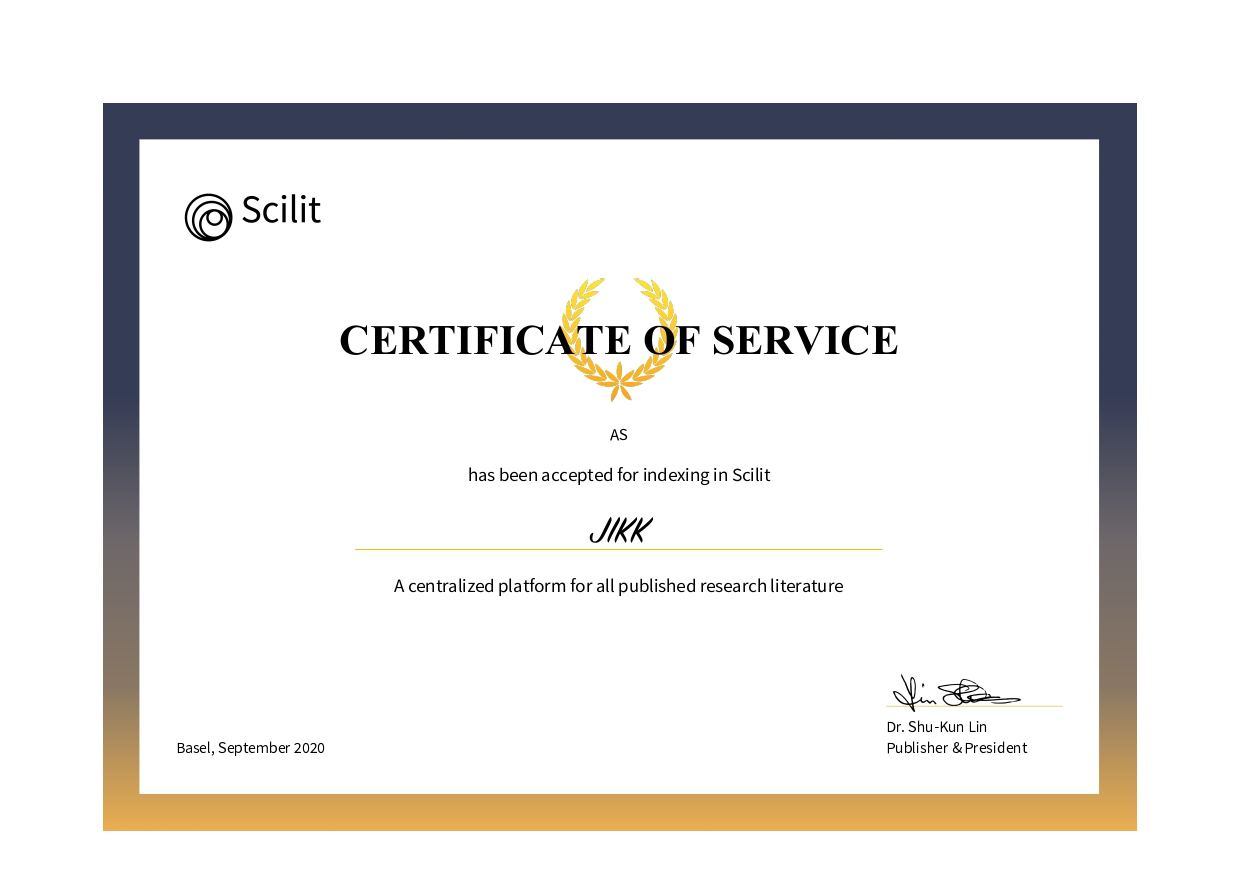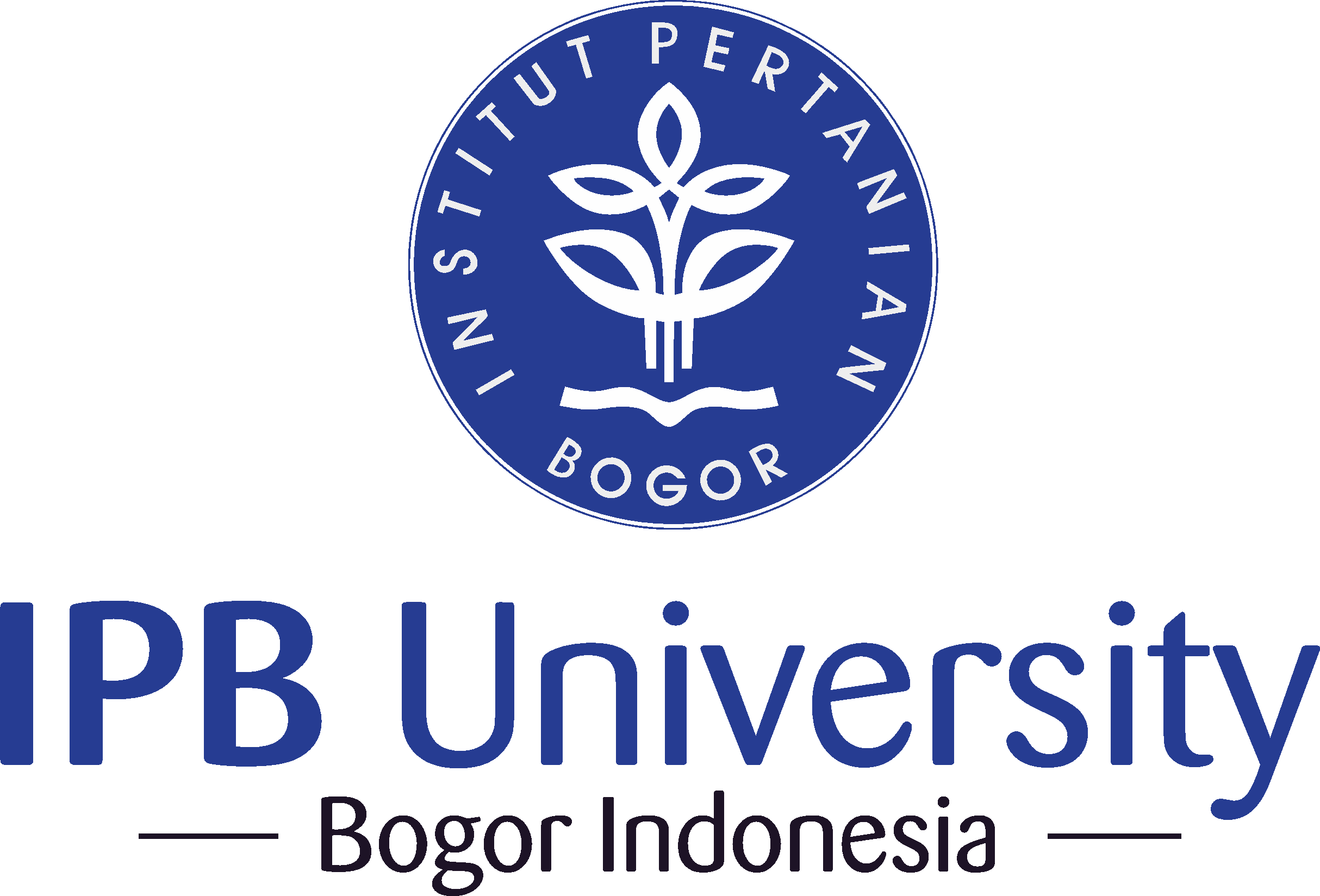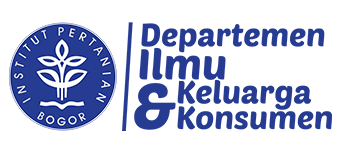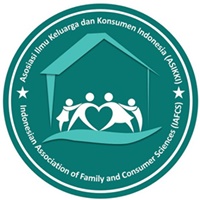ANCAMAN, FAKTOR PROTEKTIF, AKTIVITAS, DAN RESILIENSI REMAJA: ANALISIS BERDASARKAN TIPOLOGI SOSIODEMOGRAFI
Abstract
The aims of this study were to analyze the differences of hazard, protective factors, activities, and resilience among adolescents by gender, district, and mother’s employment status; and to analyze the influence of adolescence characteristics, family characteristics, hazard, protective factors, and activities on adolescent’s resiliency. Location of this research were two junior high schools that were represented the urban and rural area in Bogor and selected purposively. Participants of this research were 133 students consisting of 84 girls and 49 boys. The result showed that hazard of boys and adolescents that were from urban area were higher than girls and adolescents that were from rural area. However, protective factors (internal and external) and resilience of girls was higher than boys. External protective factors, outside activities, and resilience of adolescents in a rural area were higher than in urban area. Total protective factors, internal protective factors, external protective factors (school and peers), and resilience of adolescents whom mother was working was higher than adolescents whom mother was not working. The resilience of adolescent was affected by protective factors (internal and external) and adolescent’s activities. Resilience of adolescents is increasing while protective factors and adolescents' activities were increasing.Copyright (c) 2017 Jurnal Ilmu Keluarga & Konsumen

This work is licensed under a Creative Commons Attribution-ShareAlike 4.0 International License.
Authors submitting manuscripts should understand and agree that copyright of manuscripts published are held Jurnal Ilmu Keluarga dan Konsumen. The statement to release the copyright to Jurnal Ilmu Keluarga dan Konsumen is stated in Copyright Release Form. Copyright encompass exclusive rights to reproduce, to distribute, and to sell any part of the journal articles in all form and media. The reproduction of any part of this journal is allowed with a written permission from Jurnal Ilmu Keluarga dan Konsumen.

